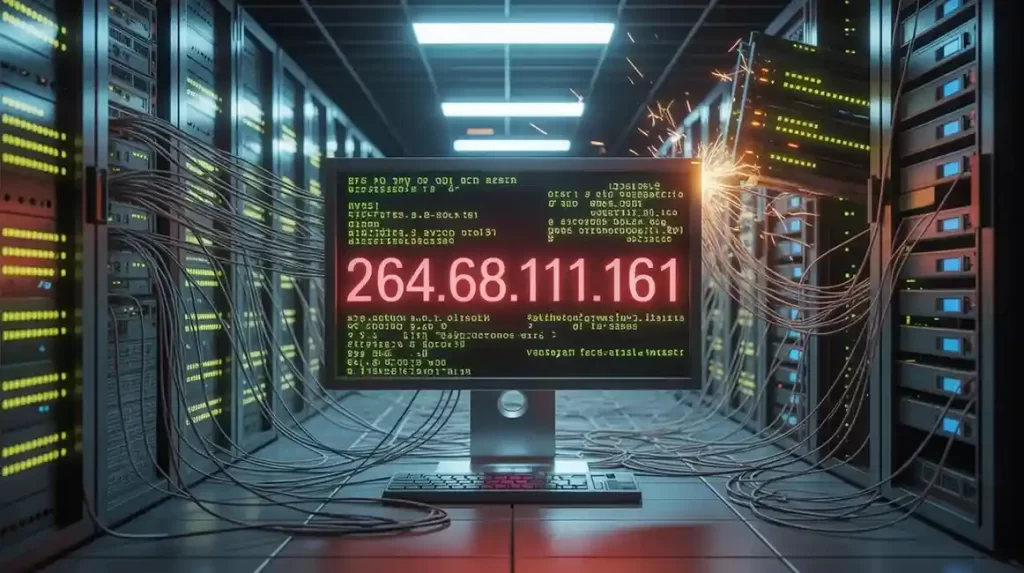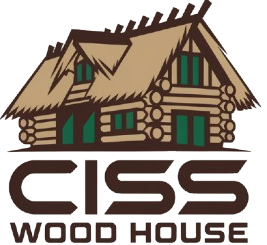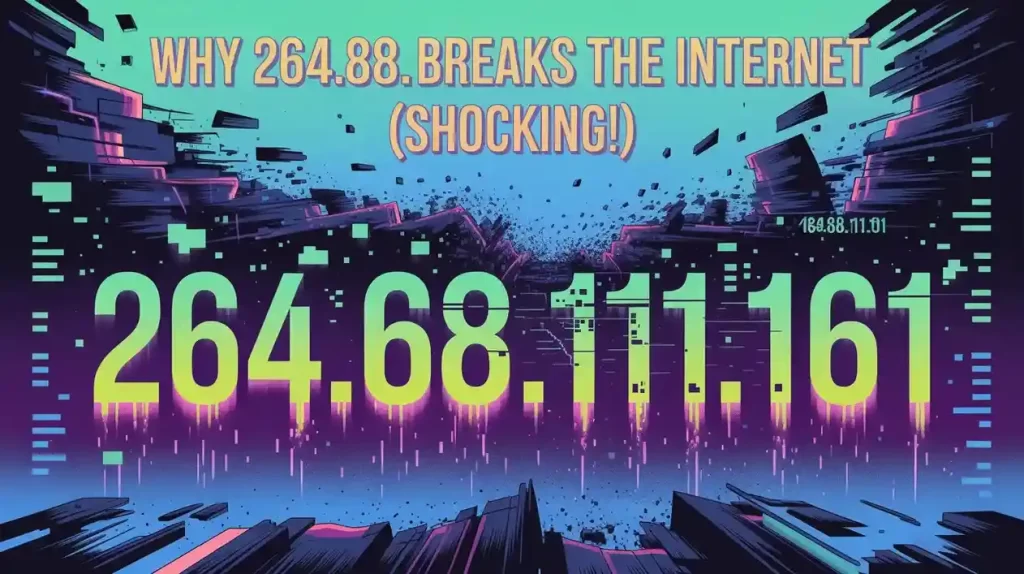Table of Contents
Have you ever encountered the mysterious IP address 264.68.111.161 and wondered what secrets it holds? You’re not alone! This seemingly innocent string of numbers has sparked countless questions across tech forums and search engines worldwide.
However, there’s a critical truth about this particular IP address that might surprise you completely.
In today’s digital landscape, understanding IP addresses has become essential for everyone, from casual internet users to cybersecurity professionals.
Whether you’ve stumbled upon 264.68.111.161 in your network logs, received it in an error message, or simply heard about it from a friend, this comprehensive guide will reveal everything you need to know about this intriguing address.
The Shocking Truth About 264.68.111.161
Here’s the bombshell revelation that will change everything you thought you knew: 264.68.111.161 is NOT a valid IP address! That’s right – this sequence of numbers violates fundamental internet protocols and cannot exist in the real world of networking.
Read also: Waxillgro279
Why This “IP Address” Breaks the Internet Rules?

Understanding the role of IP address 264.68.111.161 in network systemsTo understand why 264.68.111.161 is impossible, we need to dive into how IP addresses work. Traditional IPv4 addresses consist of four octets (groups of numbers) separated by periods.
Each octet can only contain values from 0 to 255 – no exceptions!
The problem with 264.68.111.161? The first octet contains “264,” which exceeds the maximum allowed value of 255. This makes it technically impossible and immediately identifies it as an invalid address.
The Mathematical Impossibility Explained
IPv4 addresses use a 32-bit binary representation, where each octet represents 8 bits. Since 8 bits can only represent values from 0 to 255 (2^8 – 1), any number above 255 breaks this fundamental rule.
Therefore, 264.68.111.161 exists in a digital twilight zone – referenced but never real.
The Hidden Lessons Behind Invalid IP Addresses
Understanding Valid IP Address Ranges
Valid IPv4 addresses follow strict mathematical rules:
- Class A: 1.0.0.0 to 126.255.255.255
- Class B: 128.0.0.0 to 191.255.255.255
- Class C: 192.0.0.0 to 223.255.255.255
Private vs. Public IP Addresses
Understanding the difference between private and public IP addresses is crucial:
- Private ranges: 10.0.0.0-10.255.255.255, 172.16.0.0-172.31.255.255, 192.168.0.0-192.168.255.255
- Public addresses: Everything else within valid ranges
Real-World Implications and Solutions
For Network Administrators
If you’ve encountered 264.68.111.161 in your systems, immediately investigate:
- Configuration files: for typos or corruption
- Log parsing errors: that might generate invalid addresses
- Application bugs: create malformed network requests
- Data entry mistakes: in network management tools
For Software Developers
When building applications that handle IP addresses:
- Always validate input using proper regex patterns
- Implement robust error handling for invalid addresses
- Use established libraries for IP address validation
- Test edge cases, including addresses like 264.68.111.161
For Cybersecurity Professionals
Invalid IP addresses in logs might indicate:
- Attack attempts using malformed packets
- System compromises cause data corruption
- Surveillance activities using non-standard addressing
- Network intrusion attempts with crafted payloads
Advanced Technical Insights
IPv6 Considerations
While 264.68.111.161 fails IPv4 validation, IPv6 addressing uses completely different rules with hexadecimal notation and 128-bit addresses. Understanding both protocols becomes increasingly important as networks transition to IPv6.
Network Troubleshooting Strategies
When encountering invalid IP addresses:
- Check source systems for configuration errors
- Verify data integrity in network logs
- Review application logic handling network addresses
- Monitor for patterns indicating systematic issues
The Future of IP Addressing
As internet infrastructure evolves, understanding both valid and invalid addressing becomes crucial. The transition to IPv6, the emergence of IoT devices, and expanding network complexity make IP address literacy more important than ever.
Final Words
The mystery of 264.68.111.161 reveals a fascinating glimpse into the structured world of internet protocols.
While this particular address cannot exist in reality, understanding why it’s invalid teaches us valuable lessons about network fundamentals, security awareness, and proper system administration.
Remember, every invalid IP address you encounter tells a story – whether it’s a simple typo, a configuration error, or something more significant.
By developing a keen eye for these anomalies, you’ll become a more effective troubleshooter and security-conscious internet user.
Next time you see 264.68.111.161 or any suspicious IP address, you’ll know exactly what to look for and how to respond appropriately!
People also ask
Where do people encounter this invalid IP address?
Most commonly, 264.68.111.161 appears in:
Educational materials as an example of invalid addressing
Software testing scenarios
Error message demonstrations
Networking troubleshooting exercises
Cybersecurity training programs
Could this be a typo of a real IP address?
Absolutely! The most likely scenario is that someone intended to type a valid address like:
64.68.111.161 (removing the “2”)
254.68.111.161 (changing “264” to “254”)
192.168.111.161 (a common private network address)
What happens if you try to ping 264.68.111.161?
Your network stack will immediately reject this address before attempting any connection. Most operating systems and networking equipment recognize the invalid format and return an error message indicating “invalid IP address” or similar.
Is there any danger associated with this address?
Since 264.68.111.161 cannot exist as a real destination, there’s no direct security threat. However, encountering this address might indicate:
Configuration errors in your network setup
Malformed data in applications
Potential issues with network monitoring tools






